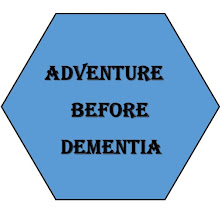This morning, we flew to Alice Springs, the main town in central Australia, known as the “outback.” The Alice, as locals call it, is the unofficial capital of the Red Center, a seriously sunburnt and thirsty country. Upon arrival, we took a walking tour of town - we weren't moving very fast due to the heat - it was about 95 degrees and there wasn't much shade.
We stopped in a local souvenir shop for a quick lesson in Aboriginal art, types of boomerangs, and the didgeridoo. The shop owner has made several recordings of didgeridoo music and he gave us an impromptu concert right in the shop.
We then went over to the headquarters of the Royal Flying Doctor Service, a unique Outback organization established in 1928 to provide speedy medical care to people living in remote and isolated areas of Australia. Today, the RFDS operates 51 planes from 27 strategically located bases. Its service area covers 2000 square miles, assisting nearly 300,000 people per year.
Out behind the station buildings, we could just see the nearly dried-up water hole (or billabong, as it's known here). There hasn't been rain here for some time, so the water is very low and not very clean to drink. So, take a look at the kangaroo digging near the water line - he digs until safe water, filtered through the sand, percolates into the hole. Pretty clever.
At the end of the official tour, Alec took us into the station yard and gave us some lessons in throwing the boomerang. This is a project that will take more time than we have here.
It was very special to spend time with Alec and to hear his stories - as a boy at the station itself and during the Second World War when the children were sent to Darwin and how they survived after the Japanese bombing of that city. He later became a boxer and was a big fan of American boxing on the radio - followed by the Grand Ole Opry. His amazing story is in a small book, an autographed copy of which is now in South Carolina!
We ended the day back in town for dinner at the Red Ochre Grill. This restaurant is known for its use of traditional native fruits, game meats, and seafood. We tried emu salad, barramundi (fish), kangaroo, and pavlova (fruit, meringue and cream) for dessert. Nobody went away hungry.










